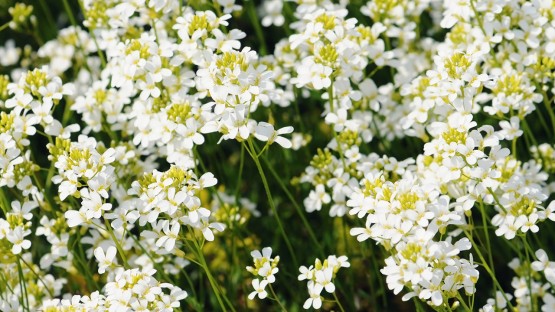How do our arms stay the same length throughout development, from infancy to adulthood? Or how do flowers and fruits on a plant mature to be similar sizes?
New research that looked at the development of Arabidopsis flowers addressed the fundamental question of how two or more organs or plant parts grow to the same size and shape, which is essential for proper function.
The study, “Robust organ size requires robust timing of initiation orchestrated by focused auxin and cytokinin signaling,” published May 25 in Nature Plants.
The research found that precise hormone signaling and the timing of the initiation of organ growth affects organ size throughout development.
“We think that this mechanism may be at work in many organs of both plants and animals, including humans,” said Adrienne Roeder, the Nancy M. & Samuel C. Fleming Term Associate Professor at the Weill Institute for Cell and Molecular Biology, and the Section of Plant Biology, School of Integrative Plant Science, in the College of Agriculture and Life Sciences. Mingyuan Zhu, a doctoral student in Roeder’s lab, is the paper’s first author.
An existing theory, from research done on fruit flies, discovered that if the precursor tissue that makes a wing – called a wing disk – is too small, development of the whole organism will pause and wait for the wing disk to catch up and reach its proper size before the rest of the organism continues to develop.
But the Cornell researchers and their colleagues identified a mechanism that ensures two or more organs or parts develop to the same size based on the synchronous timing of their initiation.
They did the research on Arabidopsis plants, which have four sepals (the outermost floral organs) per flower. Sepals need to grow equally in order to remain closed as the flower bud grows, to keep water, insects and pathogens out. There are more than 100 flowers on every Arabidopsis plant, which helped the scientists calculate statistical measurements during experiments.
The researchers used a mutant plant that develops with different sized and shaped sepals at maturity. They tracked these plants from the initiation of sepal development through maturity and compared the same process in normal plants. They also live-imaged the plants every six hours, looking at how the cells grew.
They found that in normal Arabidopsis flowers, all four sepals initiate development within 12 hours of each other, but “[i]n a mutant where initiation is delayed for some sepals, those sepals lag behind and cannot catch up,” Roeder said. As a result, the flower bud cannot close properly. The researchers found that sepal development is initiated by precise signaling of two hormones, auxin and cytokinin, which must occur right at the location on the bud where the sepal will emerge to trigger the process.
The precise timing of initiation is essential for coordinating organ size.
“The timing of organ initiation affects sepal size throughout the rest of their growth and that’s what controls whether these flower [buds] can stay closed,” Roeder said.
Future work may explore whether the similar mechanisms exist in humans and other organisms. Arezki Boudaoud, a biophysicist, and Olivier Hamant, a mechanobiologist, at École Normale Supérieure de Lyon, France, Richard Smith, a computational modeler at the John Innes Centre in Norwich, England, and Chun-Biu Li, a statistician at Stockholm University, Sweden, and their research groups are co-authors of the study.
The study was funded by the National Institutes of Health, the Human Frontier Science Program, the Weill Institute and the Cornell Graduate School.















